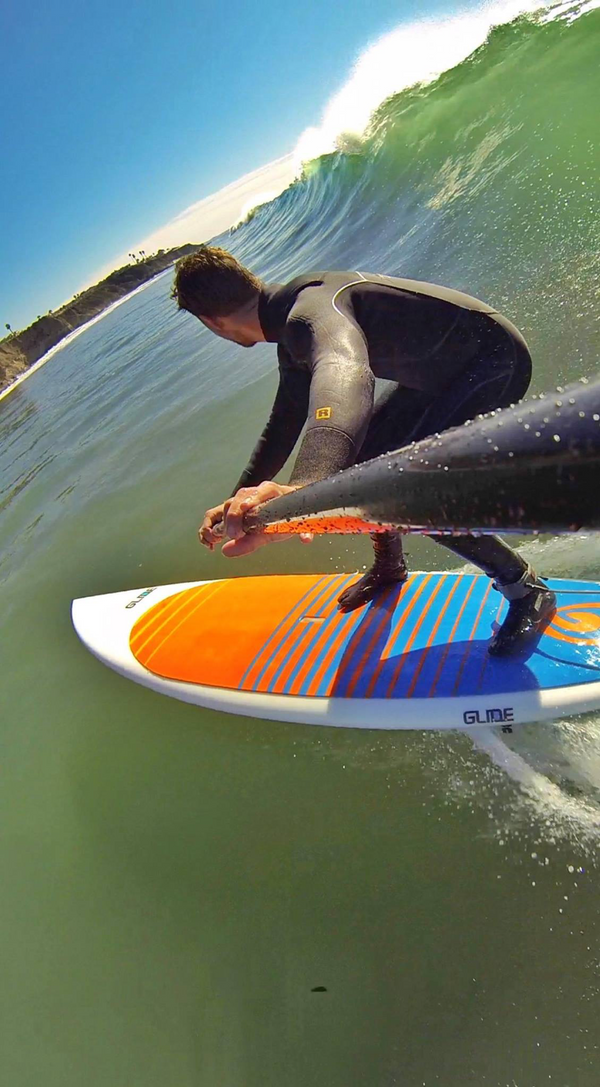
How to Surf Your SUP
Transitioning from calm lake paddleboarding to the dynamic world of SUP (Stand Up Paddleboard) surfing is an exciting step that opens up a whole new realm of challenges and thrills. SUP surfing combines the tranquility of paddleboarding with the exhilaration of riding ocean waves. Here's everything you need to know to make your first SUP surfing experience a success.
Essential Gear
- Leash: A straight leash is crucial for SUP surfing. It ensures your board doesn't snap back too quickly after a wave passes, enhancing safety for you and others around.
- Wetsuit: Depending on the water temperature, a wetsuit might be necessary. Remember, you'll spend a lot of time standing on your board, exposed to the elements, so dress accordingly.
Ideal Conditions
- Wave Size: Start with 2–3 foot waves. These smaller swells are easier to catch on a SUP than a traditional surfboard due to the board’s buoyancy and your standing position.
- Wind: Avoid windy days as much as possible. Wind can turn your body into a sail, making it harder to paddle and maintain control.
- Location: Choose a spot with ample space. Crowded areas increase the risk of collisions.
Getting Out
Navigating through breaking waves to reach the lineup can be one of the most challenging parts of SUP surfing, especially for beginners.
- Paddle Out: At first, you may need to carry your SUP to deeper waters. Once it's too deep to walk, lay prone on your board, paddling with your hands to move past the breakers.
- Duck Diving: Unlike traditional surfboards, SUPs are too buoyant for duck diving. If a wave is about to break on you, it’s often best to dismount and use your leash to retrieve your board afterward.
Waiting for a Wave
Position your board parallel or slightly angled away from the shore. This stance allows you to keep an eye on incoming waves without needing to turn your board drastically, saving precious time when catching a wave.

Catching a Wave
- Paddle Hard: As a wave approaches, paddle vigorously to match its speed and ensure it doesn't roll under you. Focus on strong, concentrated strokes to gain momentum.
- Footwork: Start in your standard SUP stance. Once you catch the wave, quickly adjust your feet to a more surf-style stance for better control and maneuverability.
Riding the Wave
- Weight Distribution: Keep your weight more on the back foot to prevent the nose from burying into the wave. This stance also makes steering easier.
- Wave Navigation: Aim towards the unbroken part of the wave (the green) to extend your ride. Use your paddle for balance, steering, and maintaining your position on the wave.
Bailing Out
Knowing how to safely end your ride or bail out when necessary is crucial:
- Ending a Ride: Shift your weight to the back of the board to lift the nose and pivot back towards the incoming waves.
- Avoiding Collisions: If an obstacle or another surfer is in your path, it’s often safer to bail out to the side, using your leash to retrieve your board.
Conclusion
SUP surfing adds an exhilarating dimension to stand-up paddleboarding, offering endless fun and a great workout. With practice, patience, and respect for the ocean and its power, you'll find SUP surfing an addictive addition to your paddleboarding activities. Remember to start small, focus on safety, and gradually build your skills. Welcome to the incredible world of SUP surfing!
Related Topics
Best Paddle Boarding Places to SUP in Idaho
How to Paddle Board on a Windy Day?





